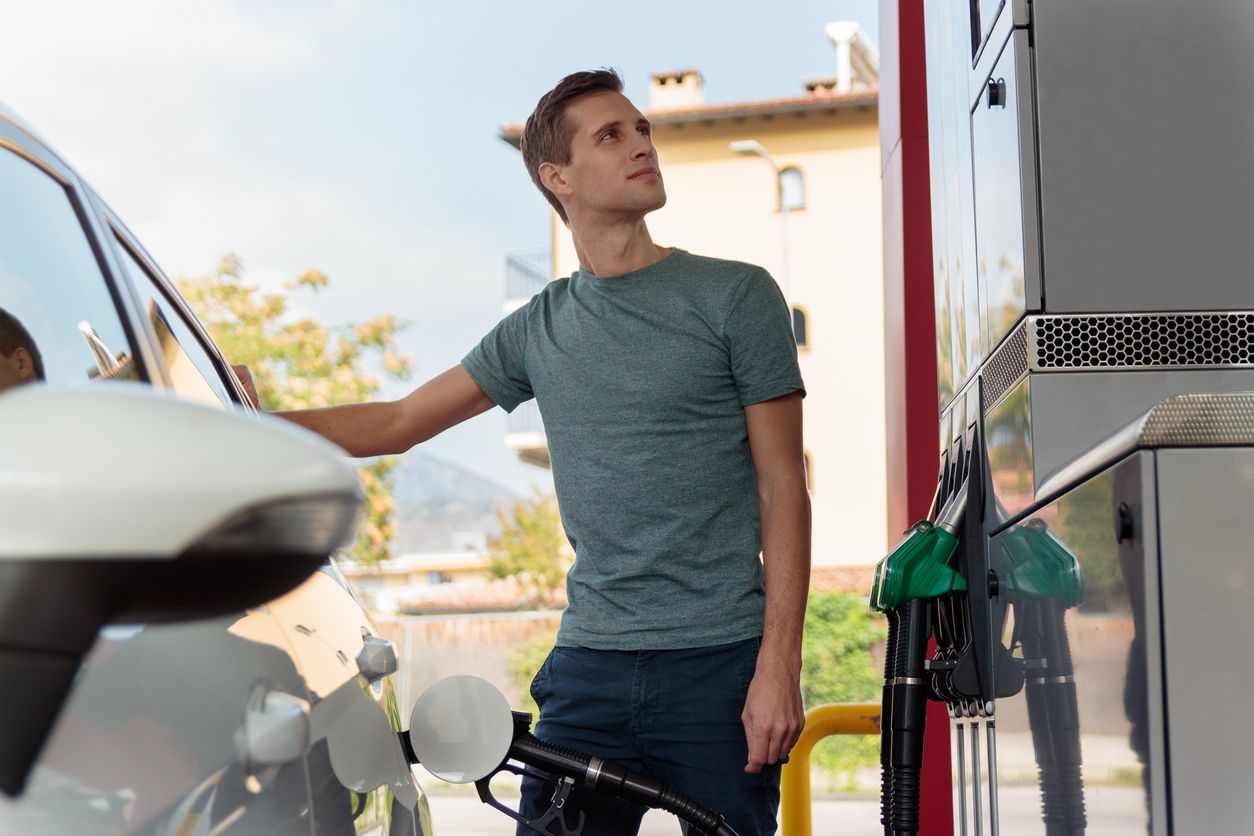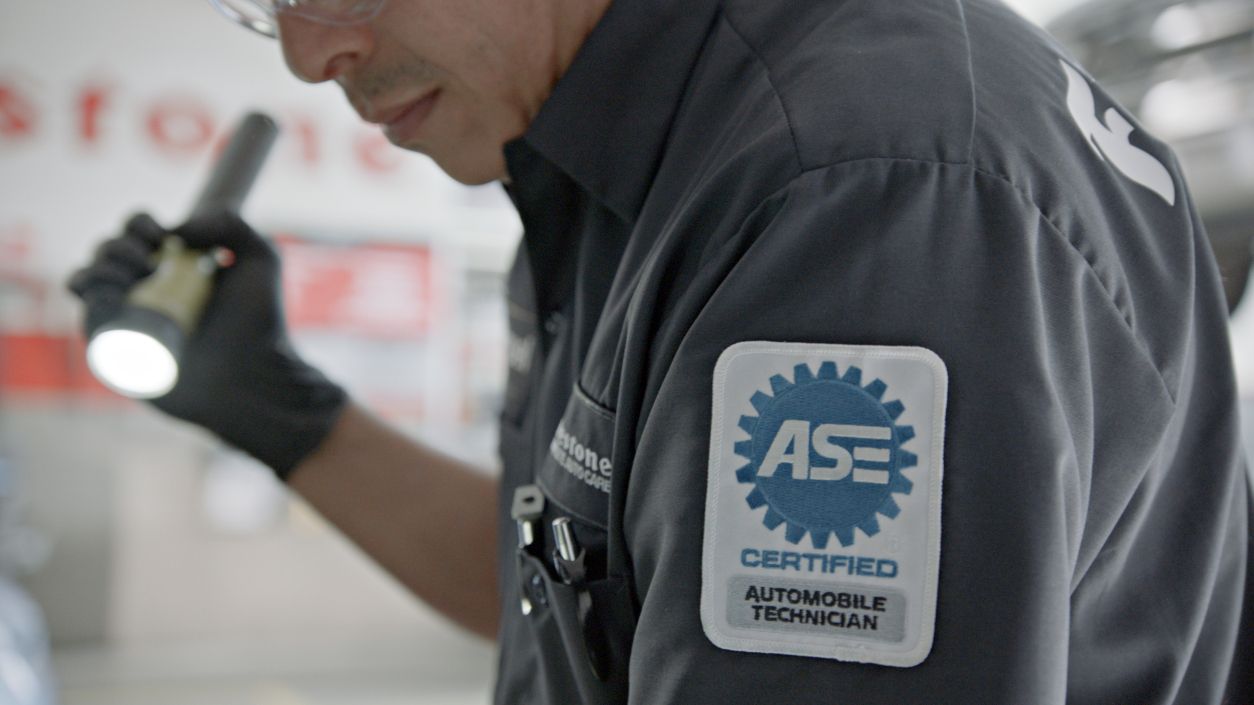You need to refuel your vehicle, and it’s freezing outside. You might be wondering, “Can you pump gas while the car is on?” After all, NASCAR racers do it all the time, and you really want to conserve precious cabin heat. Read on to learn the best refueling practices and why it’s bad to refuel with the engine running.
Can a Car Explode While Pumping Gas? — Why You Shouldn’t Refuel With the Engine Running
Fires caused by leaving engines running during refueling are unlikely. Still, they can happen due to stray sparks, faults in electrical systems, or contact with hot components. According to the National Fire Protection Association (NFPA), the autoignition (AKA spontaneous combustion) temperature of gasoline is 536°F. This threshold can easily be reached by exhaust components like catalytic converters, which can see temperatures of up to 800-1000°F inside the exhaust system.
Since catalytic converters are located on the underside of vehicles, you might think that it’s unlikely that gasoline vapors from the pump would ever come into contact with them. But gasoline vapors are denser than air, so they sink to the lowest point they can find, which could end up being beneath your vehicle. Fortunately, gas stations aren’t enclosed, so air currents will likely disrupt and sweep away most vapors before they can settle. So will your catalytic converter ignite gas fumes? Probably not — but why risk leaving your vehicle running, and allowing the converter(s) to cool down?
Additionally, if your car suffers from faulty spark plugs, unburnt fuel can make its way into the converter, overheat the catalyst, and break down its delicate honeycomb structure over time. When this happens, red hot particles can be expelled from your exhaust pipe — something you definitely don’t want while refueling your vehicle.
Not only can hot components ignite fuel vapors, but electrical faults like shorts and worn insulation also pose an ignition source at the pump if spark occurs. Turning off your vehicle helps prevent subtle problems like those from becoming not-so-subtle infernos.
Though healthy automobiles are unlikely to create any of the conditions needed to spark a fire by being left running at the pump, it’s better to err on the side of caution. Plus, most states enforce the International Fire Code, which requires that “the engines of vehicles being fueled shall be shut off during fueling.” So, leaving your engine running while pumping gas isn’t just potentially dangerous. It’s also highly discouraged in most states.
Other Important Refueling Practices:
Don’t Re-Enter the Vehicle
Entering and exiting your vehicle during refueling is potentially more hazardous than leaving your engine running. In fact, a study from the Petroleum Equipment Institute (PEI) investigated 176 instances of gas station fires where “no open flames, running motors, or electrical continuity problems were involved.” Of those 176 cases, 87 of them (nearly 50%) “occurred when the fueler returned to the vehicle during the refueling process and then touched the nozzle after leaving the vehicle.”
These fires were likely caused by the buildup and release of static electricity. When entering and exiting vehicles, we often slide across our car’s seats, which can generate static. Upon touching the metal fuel nozzle, our body may transfer that electricity, resulting in a tiny explosion-inducing spark.
If you can’t avoid getting back into your vehicle, ground yourself before reaching for the fuel nozzle. According to the American Petroleum Institute (API), you can do this by touching a metal part of your car with your bare hand after exiting — this could be your door or any other metal surface, so long as it is not near the fuel filler.
Unplug Any Charging Accessories
One of the main reasons it’s important to turn your car off before pumping gas is to minimize the electricity flowing through its wiring harness. However, even with the car off, some wires, like those connected to cigarette lighters or USB ports, may maintain their power. So if you want to be extra safe, unplug any charging cords or electronic accessories before refueling — especially if they are worn or damaged.
Don’t Smoke Near the Pump
Gasoline and fire don’t mix — or rather, they mix too well. Like leaving your engine running, smoking near the pump is probably frowned upon in your state. This is thanks to the International Fire Code, which prohibits certain fuel-dispensing facilities from allowing “smoking and open flames… in areas where fuel is dispensed.” Refueling doesn’t take long, so be safe and wait until you’re away from the station to light one up.
Don’t “Top Off” Your Tank
“Topping off” refers to the dangerous practice of continuing to fill your tank after the gas pump has clicked off — indicating that your tank is full. Though some believe that topping off your gas tank can provide a bit of extra mileage before the tank’s next refill, doing so can damage your car and pose a fire hazard if your tank overflows.
The Environmental Protection Agency (EPA) states that most cars made in the early 2000s and beyond utilize onboard refueling vapor recovery (ORVR) systems. These systems protect the environment and lower the risk of gas station fires by preventing vapors in your fuel tank from escaping into the atmosphere during refueling. Instead, they use carbon canisters to capture vapors until the engine is running, which are then sucked into the engine and used as fuel. Topping off a vehicle can flood this ORVR system, reducing its lifespan and potentially causing your engine to run poorly.
Refrain from Using Your Cell Phone
You’ve probably noticed the signs near gas pumps that warn against cell phone usage. In the past, rumors circulated that cellular devices could potentially emit fire-starting sparks during use. However, after scientific testing, the NFPA and the Federal Communications Commission (FCC) found that using cell phones near gas pumps is not a fire hazard. Nowadays, those signs remain merely to reduce liability for gas station owners.
So, can you be on your phone while pumping gas? Yes. However, even though cell phones don’t pose a fire hazard, they can certainly be a distraction. When filling your tank, it’s best to stay physically and mentally present just in case something goes awry.
Bonus Tip: Protect Your Vehicle with Fuel System Maintenance
Following these refueling practices is a great way to protect your vehicle from fiery consequences, but did you know that prioritizing annual fuel system cleanings and a fuel filter replacement, if equipped, is another way to keep your vehicle in tip-top shape? If not maintained regularly, a poorly functioning fuel system can cause rough idling, reduced performance, increased emissions, and more. Call on your local Firestone Complete Auto Care technicians, and schedule your fuel system maintenance appointment today!



